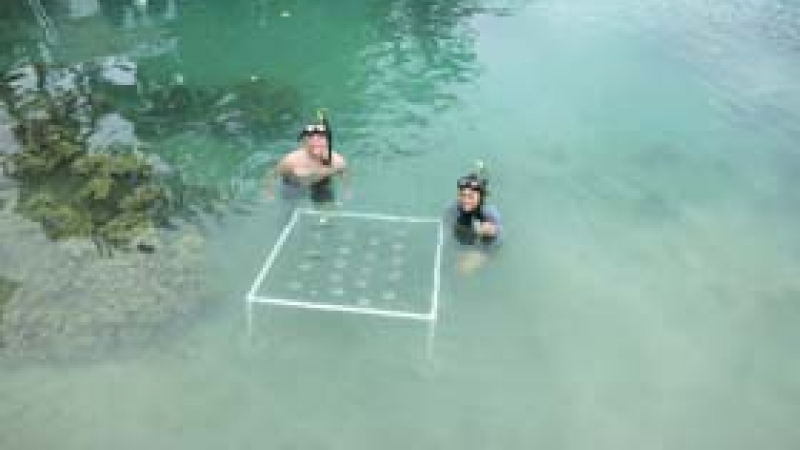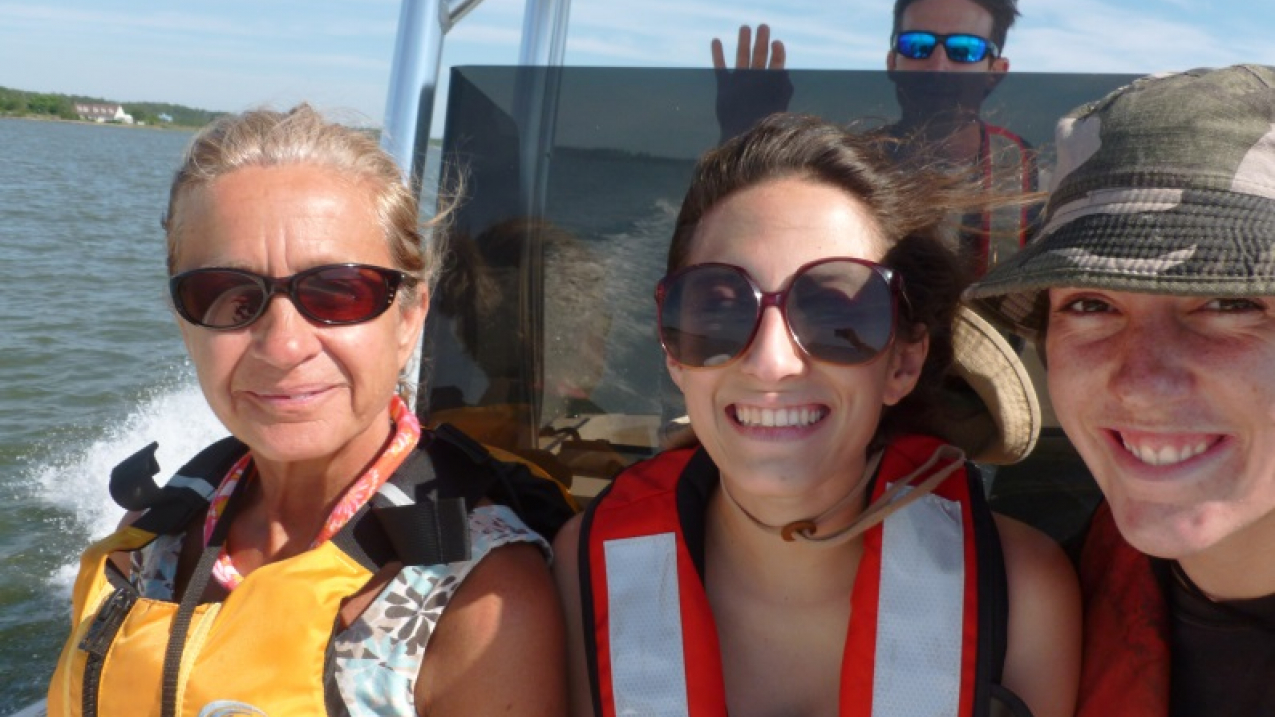
From left: Gretchen Messick (National Ocean Service scientist), Hollings scholar Maya Spaur and Lauren Winter (UMASS Amherst). (Image credit: Maya Spaur)
Earth Day will be celebrated around the world on Saturday, April 22nd. From the very beginning, Earth Day has been strongly tied to education. The first Earth Day in 1970 featured a nationwide “teach-in” that focused on educating the public on environmental issues. While there are numerous examples of environmental successes since the first Earth Day, such as cleaner air, cleaner water and reduced overfishing, there is still much work to be done to tackle some of today’s most difficult environmental challenges.
NOAA is a mission driven science agency that, like Earth Day, was founded in 1970. Each year, NOAA selects a cohort of exceptional students as Hollings and Educational Partnership Program Undergraduate Scholars. Scholars receive tuition support, as well as a paid summer internship at any NOAA facility across the country. Many NOAA Scholars choose projects that embody the spirit of Earth Day by using science to develop solutions to major environmental challenges. Here are a few environmental challenges that NOAA Scholars are working to solve:
Responding to oil spills
Last summer, NOAA Hollings Scholar Alfre Wimberley, an Environmental Science major at the University of North Carolina at Chapel Hill, conducted a summer internship with the NOAA Office of Marine and Aviation Operations in Seattle, WA, to develop a national oil spill response policy for the NOAA small boat fleet. The plan focuses on the first moments of response to a spill, including all needed emergency contacts and procedures for all small boats in the NOAA fleet over 40 feet in US domestic waters. This plan will be critical to ensuring safety and containing oil spills to prevent major damage.
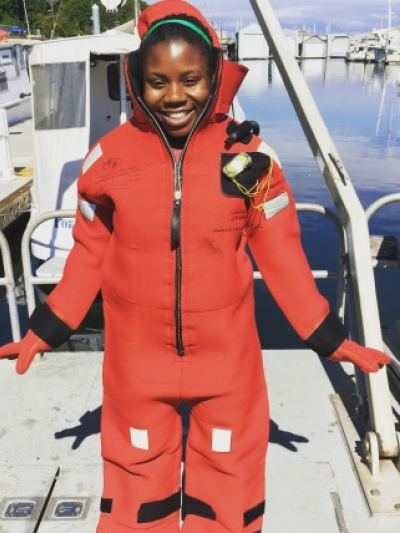
Marine debris
Jennifer Wong-Ala, a current Hollings Scholar studying Global Environmental Science at the University of Hawaii at Manoa conducted her 2016 summer internship with NOAA Fisheries at the Pacific Islands Fisheries Science Center in Honolulu, HI. In this picture, Jennifer is dissecting Longnose Lancetfish stomachs for her project in which she mapped the spatial distribution of marine debris consumed by organisms in the central Pacific Ocean and compared the results to a dispersal model for marine debris in the Pacific Ocean. Marine debris is a global problem that harms marine life, disrupts habitat and affects human health.
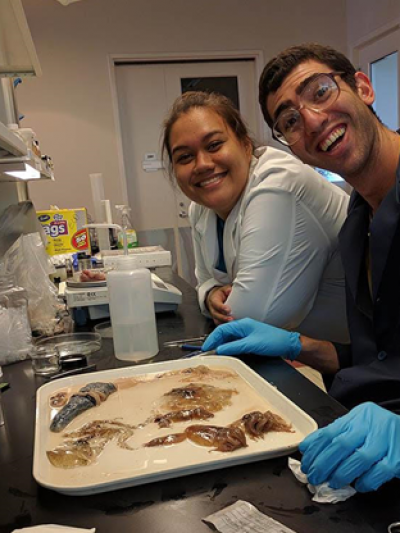
Coastal runoff & Nutrient pollution
Maya Spaur is a Hollings Scholar working toward a B.S. in Environmental Science & Technology at the University of Maryland. Last summer, she conducted an internship with the National Ocean Service in Silver Spring, MD, studying the ecosystem services provided by oysters in a Chesapeake Bay tributary. She performed a literature review, Ecosystem Services Assessment, and resource management model using aquaculture to mitigate estuarine nutrient pollution caused by runoff in the Chesapeake Bay.
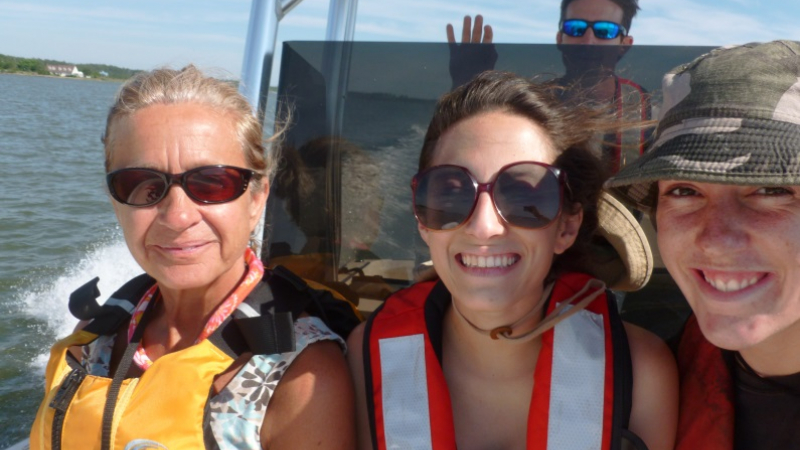
Detecting harmful algal blooms
Valentina Rappa is an EPP/MSI Undergraduate Scholar studying Earth System Science & Environmental Engineering at the City College of New York. During summer 2016, Valentina interned with NOAA’s National Centers for Coastal Ocean Science in Silver Spring, MD. She used high-resolution satellite imagery to monitor harmful algal blooms in Lake Erie and several lakes throughout Florida. Harmful algal blooms can cause large scale marine mortality events and affect human health, and advanced warning can help mitigate some of the negative impacts.
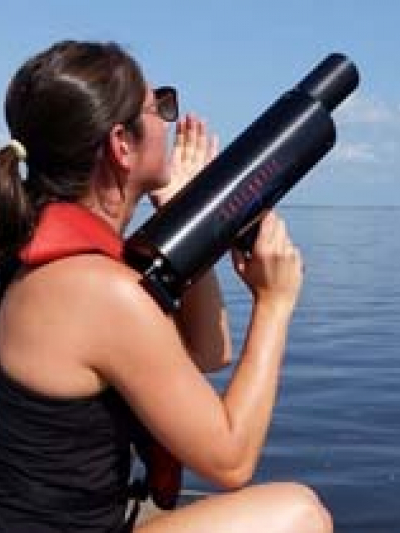
Sustainable fisheries
Ashley Hann, a Hollings Scholar studying marine biology at the University of North Carolina Wilmington, interned with the Northwest Fisheries Science Center in Newport, Oregon. She conducted a diet analysis of forage fish, comparing feeding conditions between warm and cold periods in the Northern California Current. She also assisted with field and lab work during a fisheries survey aboard the NOAA Ship Bell M. Shimada.
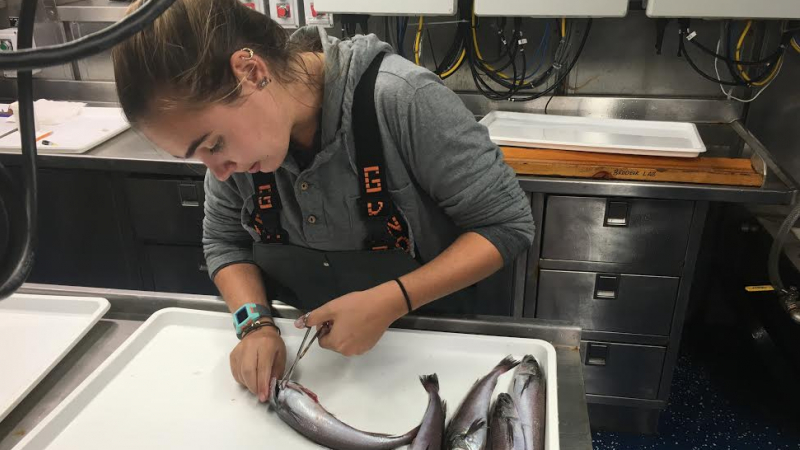
Coral Reef Restoration
Hollings Scholar Austin Hunter, studying marine biology and chemistry at Eckerd College, worked on some of the first in situ coral nurseries in Hawaii during his internship with the NOAA Coral Reef Conservation Program. He helped design a small pilot scale nursery with multiple test sites to determine the best setting to grow corals of opportunity. Corals of opportunity are fragments have already broken off from the parent colony. Austin helped with the nursery site location, design and construction of nursery tables, collecting coral fragments and growth monitoring. Coral nurseries are a common restoration tool around the world but are not yet widely used in Hawaii. Corals face many threats globally from climate change and ocean acidification as well as other human impacts.
